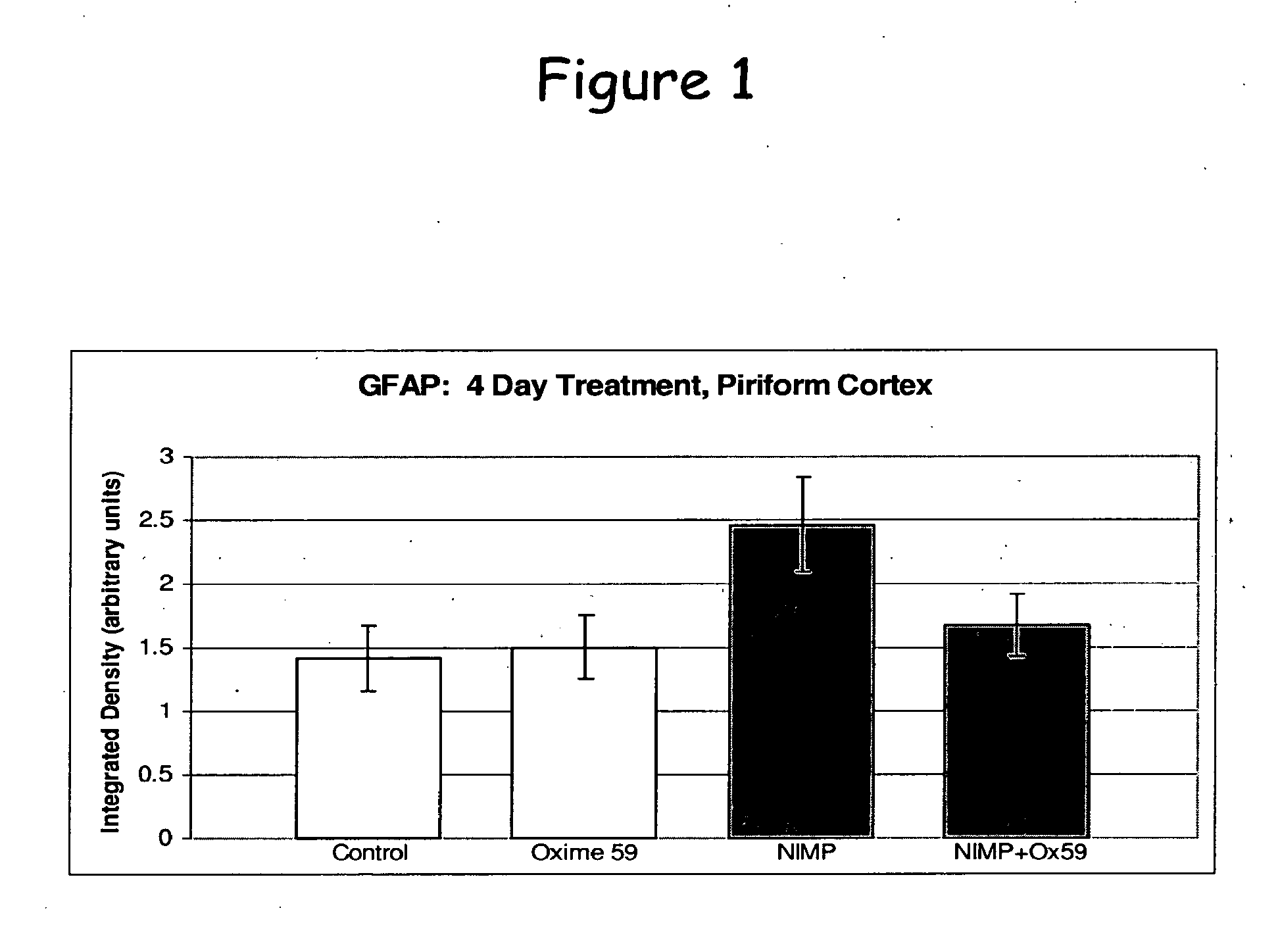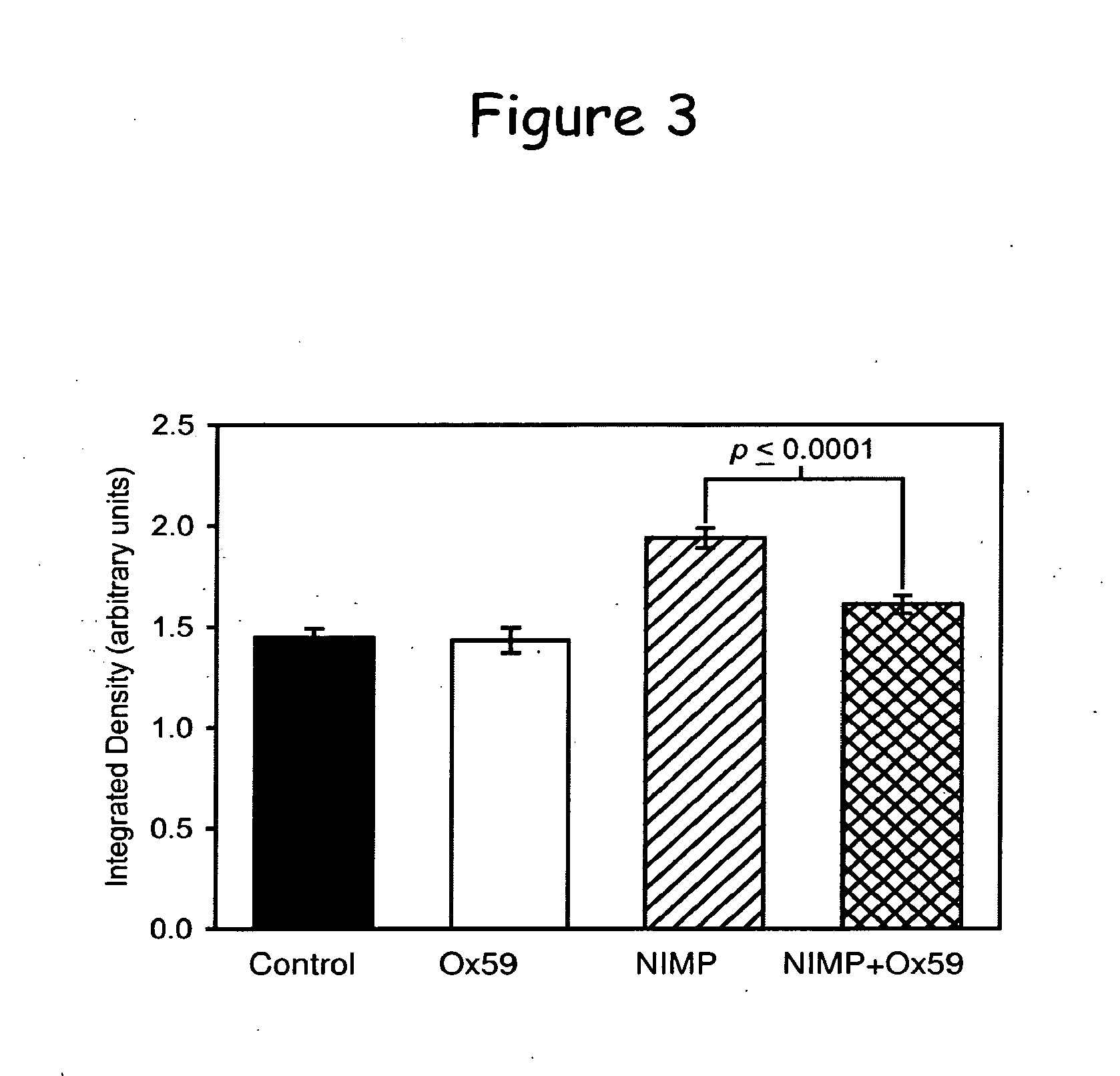Phenoxyalkyl pyridinium oxime therapeutics for treatment of organophosphate poisoning
a technology of phenoxyalkyl pyridinium oxime and organophosphate, which is applied in the direction of antinoxious agents, drug compositions, biocides, etc., can solve the problems of short-term incapacitation and long-term brain damage, death from respiratory failure, and value of existing oximes
- Summary
- Abstract
- Description
- Claims
- Application Information
AI Technical Summary
Benefits of technology
Problems solved by technology
Method used
Image
Examples
example 1
Synthesis of Novel Oximes
[0059]A series of substituted phenoxyalkyl-pyridinium-4-aldoximes was prepared as shown below.
[0060]Identity of the compounds was established and purity estimated by thin layer chromatography and UV absorbance by comparison to known compounds, and for some compounds by NMR and HPLC-MS.
example 2
In Vitro AChE Reactivation
[0061]Modifications of the spectrophotometric technique of Ellman et al. (Ellman et al., 1961; Chambers et al., 1988) were used to assess reactivation efficacy and involve assay of AChE. A 1,000 g pellet of bovine brain homogenate was chosen for use in testing because the tissue was readily available, frozen pellets are stable for up to a year at −70 degrees C., and the AChE may be isolated from the reaction mixture by relatively brief centrifugation.
[0062]Assay of potential reactivators in vitro consisted of 4 steps:
[0063](1) Incubation of AChE with organophosphate (OP). Resuspended bovine brain pellets (from a 1000 g, 10 min centrifugation) were incubated at 37 degrees C. for 10 min with IC80 final concentration of OP (10 μl OP in ethanol / ml enzyme preparation). Control samples received ethanol only.
[0064](2) Incubation with oxime. After initial incubation, a range of oxime concentrations were added. Inhibition standard samples received solvent only for c...
example 3
Determining Partition Coefficients
[0068]Lipophilicity, reflecting the potential for crossing the blood-brain barrier, was measured by determining partition coefficients. n-Octanol / water partition coefficients were determined. Oxime was dissolved in distilled water and the solution was shaken vigorously with an equal volume of the alcohol. The alcohol phase was dried over anhydrous sodium sulfate, and the oxime concentration was determined by measuring the UV absorbance and comparing to a previously established standard curve. Three (3) determinations of each oxime were performed.
PUM
| Property | Measurement | Unit |
|---|---|---|
| Fraction | aaaaa | aaaaa |
| Fraction | aaaaa | aaaaa |
| Fraction | aaaaa | aaaaa |
Abstract
Description
Claims
Application Information
 Login to View More
Login to View More - R&D
- Intellectual Property
- Life Sciences
- Materials
- Tech Scout
- Unparalleled Data Quality
- Higher Quality Content
- 60% Fewer Hallucinations
Browse by: Latest US Patents, China's latest patents, Technical Efficacy Thesaurus, Application Domain, Technology Topic, Popular Technical Reports.
© 2025 PatSnap. All rights reserved.Legal|Privacy policy|Modern Slavery Act Transparency Statement|Sitemap|About US| Contact US: help@patsnap.com



